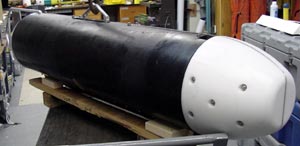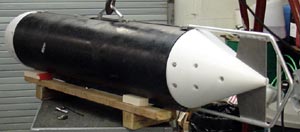FOR IMMEDIATE RELEASE02-05 January 24, 2002 Contact: Geoff Ryan (718) 595-6600 DEP Completes Phase I of Delaware Aqueduct InspectionCommissioner Joel A. Miele Sr., P.E., of the New York City Department of Environmental Protection (DEP) announced today that an underwater test vehicle had completed a successful run through the Rondout-West Branch Tunnel, the first leg of the Delaware Aqueduct, from January 13 through January 18, 2002. This completes the first phase of an inspection of the aqueduct that is being conducted by DEP and its consultants. The purpose of the inspection project is to identify the nature and most appropriate method of repair of leaks in the Delaware Aqueduct.
Phase I also included two aspects separate from the prototype vehicle. Inspections of four shafts associated with the tunnel were completed during the week of October 14, 2001, to October 22, 2001, and acoustic testing was performed from November 26, 2001, through November 29, 2001. "We could not be happier with the success of this first phase of the tunnel project," said Commissioner Miele. "No unexpected problems became evident, and we are right on schedule to go forward with Phase II."
The Delaware Aqueduct was constructed between 1939 and 1945. The Rondout-West Branch Tunnel travels from the Rondout Reservoir in Ulster County and goes under the Hudson River to the West Branch Reservoir in Putnam County. On its route to the Hudson, the tunnel crosses some geological zones where the rock is not structurally strong. The tunnel is fortified at these fault zones with steel liners that support the tunnel from inside. There are known leaks that occur at two fault zones near Wawarsing and Roseton. The goal of this project is to determine the locations and causes of leaks, as well as the overall condition of the Rondout-West Branch Tunnel. Once this project is complete, engineers will use the information provided to develop a plan to repair the tunnel.
| ||

